How to connect wires
When wiring or repairing electrical wiring, when connecting household appliances and a lot of other work, it is required to connect the conductors. In order for the connection of wires to be reliable and safe, it is necessary to know the characteristics of each of them, where and when, under what conditions they can be used.
The content of the article
Existing ways of connecting conductors
To connect wires can be done in several ways:
- welding is the most reliable method that provides high reliability of the connection, but requires skills and the presence of a welding machine;
- terminal blocks are a simple feasible and fairly reliable connection;
- soldering - works well if the currents do not exceed the standard and the connection does not heat up to temperatures above normal (65 ° C);
- crimping with sleeves - requires knowledge of technology, special pliers, but the connection is reliable;
- the use of spring clips - wago, PPE - are quickly installed, provided that the operating conditions are observed, they provide good contact;
- bolted connection - simple to perform, is usually used in difficult cases - when it is necessary to switch from aluminum to copper and vice versa.
The specific type of connection is selected based on many factors. It is necessary to take into account the material of the conductor, its cross-section, the number of cores, the type of insulation, the number of conductors that will be connected, as well as the operating conditions. Based on these factors, we will consider each of the types of connections.
Welding - high reliability in all conditions
When the wires are connected by welding, the conductors are twisted, and their end is welded. The result is a metal ball, which ensures a stable and very reliable connection in all conditions. Moreover, it is reliable not only in terms of electrical characteristics, but also mechanically too - the metal of the connected wires after melting forms a monolith and it is impossible to isolate a separate conductor.
The disadvantage of this type of wire connection is that the connection is 100% one-piece. If you need to change something, you need to cut off the fused piece and redo it all over again. Therefore, for such connections, a certain amount of wires is left - in case of possible rework.
Other disadvantages include a welding machine, appropriate electrodes, flux and work skill. In addition, welding takes a lot of time, it is required to protect the surrounding objects, and it is also inconvenient to work with the welder at a height. Therefore, electricians practice this type of connection in exceptional cases. If you do "for yourself" and know how to handle the welding machine well, you can practice on scraps. The main trick is not to melt the insulation, but to weld the metal.
After cooling, the welding site is isolated. You can use electrical tape, you can use heat shrink tubing.
Crimping wire connection
For crimping wires, a special aluminum or copper sleeve is required - it is selected based on the size of the twist (diameter of the bundle), and the material is taken the same as for the conductors. Bare and shine-stripped wires are twisted, a sleeve tube is put on them, which is clamped with special pliers.
Both sleeves and pincers are different, there are several types.Each of them has its own rules of use (the number of wires that can be packed in a sleeve), in which you need to be well oriented. It is necessary to pack the wires according to certain rules, measure the size of the resulting bundle, and adjust it to the requirements. In general, a rather dreary task. Therefore, this type of wire connection is mainly used by professional electricians, and more and more often they are switching to spring clamps.
Terminal blocks
One of the simplest and most reliable wire connections is through terminal blocks. There are several types of them, but a screw connection is used almost everywhere. There are sockets of different sizes - for different sizes of conductors, with a different number of pairs - from 2 to 20 or more.
The terminal block itself is a plastic case in which a metal socket or plate is soldered. A bare conductor is inserted into this socket or between the plates, clamped with a screw. After the screw is tightened, you need to tug the conductor well - make sure that it is tightly clamped. Due to the fact that the connection points remain uninsulated, the area of application of the terminal blocks is in rooms with normal humidity.
The disadvantage of such a connection: due to the plasticity of metals - especially aluminum - contact weakens over time, which can lead to an increase in the degree of heating and accelerated oxidation, and this again leads to a decrease in contact. In general, periodically the connection of the wires in the screw terminal boxes must be tightened.
Advantages - speed, simplicity, low cost, does not require any skills, except that the ability to use a screwdriver. Another important advantage - you can easily connect wires of different diameters, single-core and multi-core, copper and aluminum. There is no direct contact, therefore there are no risks.
Soldering
First, about the soldering technology. The connected conductors are cleaned of insulation, cleaned from oxide film to pure metal, twisted, then tinned. For this, the conductors are heated with a soldering iron, applied to the rosin. It should cover the joint completely. Tinned wires are twisted first with your fingers, then squeezed using pliers. Soldering flux can be used instead of tinning. They are well moistened with wires, but after twisting.
Then, in fact, the soldering process begins: the joint is heated with a soldering iron or a narrow-torch torch. When the rosin or flux begins to boil, they take some of the solder on the tip of the soldering iron, bring it into the soldering zone, pressing the tip to the conductors. The solder flows to fill the gaps between the wires, ensuring a good connection. When using a torch, the solder is simply added a little to the torch.
Further, after the soldering point has cooled down, according to the technology, it is necessary to wash off the flux residues (they accelerate oxidation), dry the connection, cover it with a special protective varnish, and then isolate it with electrical tape and / or heat shrink tubes.
Now about the advantages and disadvantages of this method of connecting wires. In low current systems, soldering is one of the most reliable ways to connect wires. But, when laying electrical wiring in a house or apartment, it is criticized mercilessly. The thing is that the solder has a low melting point. With the periodic passage of large currents through the connection (it happens if the circuit breakers are incorrectly selected or faulty), the solder gradually melts and evaporates. Time after time the contact gets worse, the connection heats up more and more. If this process is not found, it may well end in fire.
The second negative point is the low mechanical strength of the soldering. It's about tin again - it's soft. If there are a lot of wires in a soldered joint, and if they are still rigid, when trying to pack them, the conductors often fall out of the solder - the elastic force is too great, which pulls them out.Therefore, it is not recommended to use the connection of conductors by soldering when wiring electricity: it is inconvenient, long and risky.
Spring clamps for connecting wires
One of the most controversial ways to connect wires is with spring clips. There are several types, but the most common two are wago (wago) terminal blocks and PPE caps. Externally and in the way of installation, they are very different, but at the heart of both designs is a spring that creates a strong contact with the wire.
There are disputes about this spring. Opponents of wago use say that the spring will weaken over time, the contact will get worse, the connection will start to get hotter, which, again, leads to an even faster decrease in the degree of spring elasticity. After some time, the temperature may rise so much that the body (plastic) will melt, but what can happen next is known.
In defense of the use of spring clips to connect wires, it can be said that if they are used in accordance with the manufacturer's recommendations, problems are very, very rare. Although there are many fakes and wago, and PPE, as well as an abundance of photos of them in molten form. But, at the same time, many people use them, and, under normal operating conditions, they work for years without complaints.
Wago wire clips
They appeared on our market several years ago and made a lot of noise: with their help, the connection is very quick and easy, while having high reliability. The manufacturer has specific recommendations for the use of these products:
- wago should only be used for solid or stranded conductors with a cross section of 0.5 mm or more2 up to 4 mm2;
- to fix and connect stranded and small diameter wires, use the CAGE CLAMP - from 0.08 mm2 up to 35 mm2;
There is a metal plate inside these devices, which ensures the proper degree of contact. The shape and its parameters of the plates were developed and tested specially. The tests were carried out on a vibration stand for many hours, then heated and cooled. Then the electrical parameters of the connection were checked. All tests were passed with "excellent" and branded products always show themselves "five".
In general, the range of Wago products is very wide, but for wiring or connecting home appliances, lighting fixtures, they use two options for wire clamps: 222 series (detachable) with the ability to reseal or change the connection and 773 and 273 series - which are called one-piece.
Detachable
Spring clips for wiring Wago 222 series has a number of contact pads - from two to five - and the same number of flag-clips. Before starting the connection, the flags rise up, the conductors stripped of insulation are inserted into them (all the way), after which the flag is lowered. At this point, the connection is considered complete.
If necessary, you can reseal the connection - raise the locking flag and remove the conductor. Convenient, fast and reliable.
The 222 Vago series can be used to connect two or three, even five copper or aluminum conductors (you can connect different metals in one terminal). Wires can be solid or stranded, but with stiff wires. Maximum section - 2.5 mm2 ... Soft stranded wires can be connected with a cross section of 0.08 mm2 up to 4 mm2.
One-piece
There is another type of clamps, which does not provide for the possibility of remaking the wire connection - the 773 and 273 series. When using these terminals, the work is generally a second: the stripped wire is inserted into the corresponding socket. There is a spring clamping it, ensuring contact with the plate. All.
These spring loaded wire clamps can be used to connect solid aluminum or copper wires with a cross-sectional area of 0.75 mm or more2 up to 2.5 mm2, stranded with rigid wires - from 1.5 mm2 up to 2.5 mm2... Soft stranded conductors cannot be connected with these connectors.
To improve contact, the wires must be cleaned of oxide film before connecting. To prevent further oxidation from continuing, wago manufacturers also produce contact paste. The inside of the clamp is filled with it and it itself corrodes the oxide film, and then protects the wires from oxidation in the future. In this case, only highly oxidized, dark conductors need preliminary stripping, and the clamp body is filled with paste.
By the way, manufacturers say that, if desired, the wire can be pulled out of the clamp. To do this, take the wire with one hand, hold the terminal box with the other and rotate them back and forth with a small range, in opposite directions, stretching in different directions.
Clamps for lamps (construction and installation terminals for lamps)
For quick and convenient connection of lamps or sconces, wago has special 224 series terminals. With their help, it is possible to connect aluminum or copper wires of different cross-sections and types (single-core or stranded with rigid wires). The nominal voltage of this connection is 400 V, nominal current:
- for copper conductors - 24 A
- 16 A for aluminum.
Cross-section of the connected conductors from the mounting side:
- copper 1.0 ÷ 2.5 mm2 - single-core;
- aluminum 2.5 mm2 - single core.
Cross-section of the connected conductors from the side of the chandelier / sconce: copper 0.5 ÷ 2.5 mm2 - single-core, stranded, tinned, crimped.
When connecting copper wires, contact paste must be used, and aluminum wires must be manually stripped to bare metal.
This product has two drawbacks. First, the price for original terminals is high. Second - there are a lot of fakes at a lower price, but their quality is much lower and it is they who burn and melt. Therefore, despite the high cost, it is better to buy original products.
PPE caps
PPE caps (stands for “connecting insulating clamps”) are very easy to use devices. This is a plastic case, inside of which there is a conical spring. Conductors stripped from insulation are inserted into the cap, the cap is scrolled clockwise several times. You will feel that it has stopped scrolling, which means the connection is ready.
These conductor connectors are available from many manufacturers and are available in different sizes, diameters and the number of conductors to be connected. In order for the connection of the wires to be reliable, the size must be chosen correctly, and for this it is necessary to understand the marking.
After the letters PPE there are several numbers. The number of digits varies depending on the manufacturer, but they mean the same thing. For example, there is this type of marking: SIZ-1 1.5-3.5 or SIZ-2 4.5-12. In this case, the number immediately following the letters indicates the type of case. "1" is set if the body is an ordinary cone, on the surface of which grooves can be applied - for better grip. If there is a CIZ-2, then there are small protrusions on the body, which are convenient to grasp with your fingers and twist.
All other numbers reflect the total cross-section of all conductors that can be connected using this particular PPE cap.
For example, PPE-1 2.0-4.0. This means that the body of the connecting cap is conventional, conical. It can be used to connect two conductors with a cross section of at least 0.5 mm2 (they add up to 1 mm, which meets the minimum requirements - see the table).This cap contains maximum conductors, the total cross-section of which should not be more than 4 mm.2.
In the second version of the marking, after the abbreviation PPE, there is only a number from 1 to 5. In this case, you just need to remember which one is useful for which wire section. The data is in another table.
By the way, PPE caps can only connect copper wires - aluminum conductors, as a rule, are thicker than the maximum allowable for these connectors.
Bolted connection
This connection is assembled from a bolt of any diameter, a suitable nut and one, or better - three, washers. It is assembled quickly and easily, it serves for a long time and reliably.
First, the conductors are stripped of insulation, if necessary, the upper oxidized layer is removed. Further, a loop is formed from the stripped part, the inner diameter of which is equal to the diameter of the bolt. To make it easier, you can wrap the wire around the bolt and tighten it (middle version in the right figure). After that, all this is collected in this order:
- A washer is put on the bolt.
- One of the guides.
- The second washer.
- Another conductor.
- Third puck.
- Nut.
The connection is tightened first with your hands, then with keys (you can take pliers). That's all, the connection is ready. It is mainly used if you need to make a connection of wires from copper and aluminum, it can also be used when connecting conductors of different diameters.
How to connect aluminum and copper conductors
By the way, let us recall why it is impossible to directly connect copper and aluminum wires. There are two reasons:
- Such a connection gets very hot, which in itself is very bad.
- Over time, the contact weakens. This is because aluminum has a lower electrical conductivity than copper, as a result, when passing the same currents, it heats up more. When heated, it expands more strongly, squeezing out the copper conductor - the connection gets worse, it heats up more and more.
To avoid such troubles, copper and aluminum conductors are connected using:
- terminal blocks;
- wago;
- bolted connection;
- branch clamps (make wire connections on the street).
Other types of connectors cannot be used.
How to connect wires of different diameters
If conductors of different diameters are to be connected, there should be no twisting to obtain good contact. This means that you can use the following types:
- terminal blocks;
- wago;
- bolted connection.

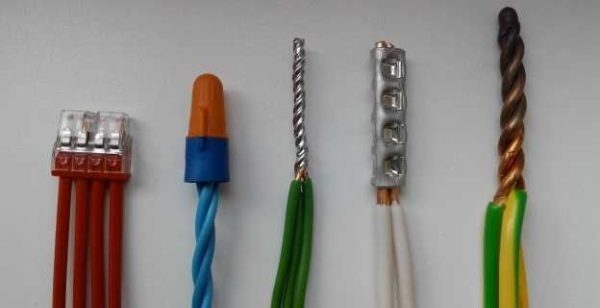
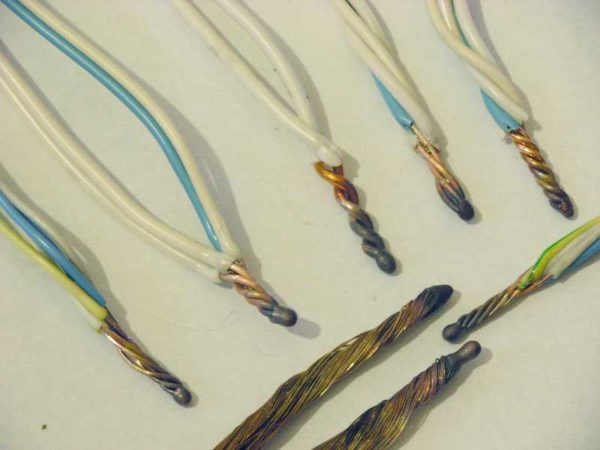
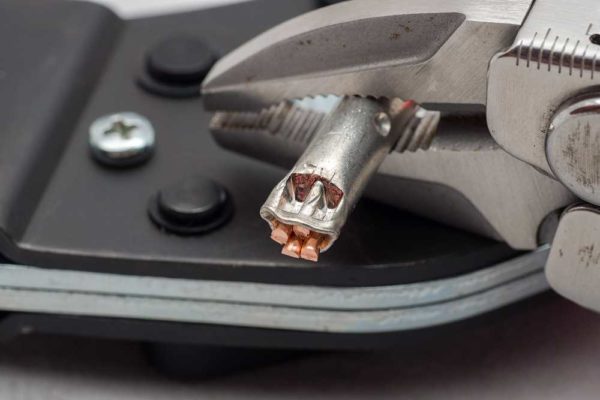

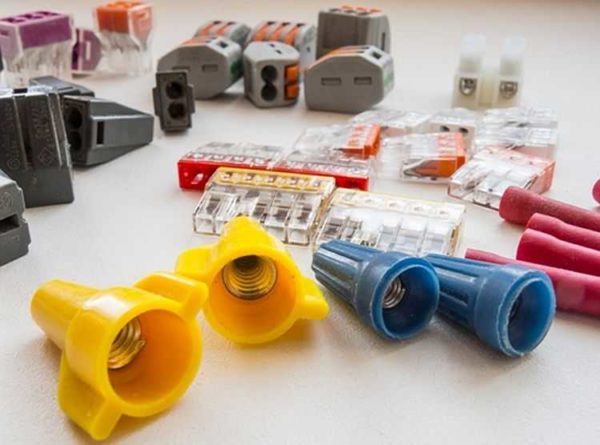

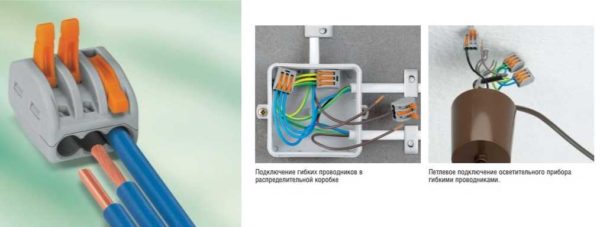
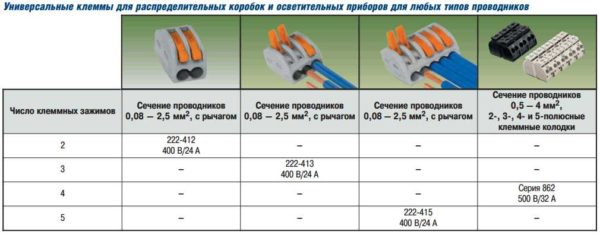
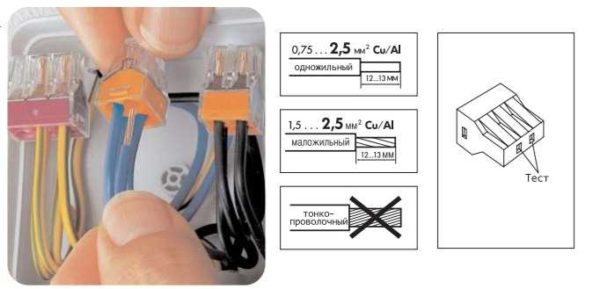

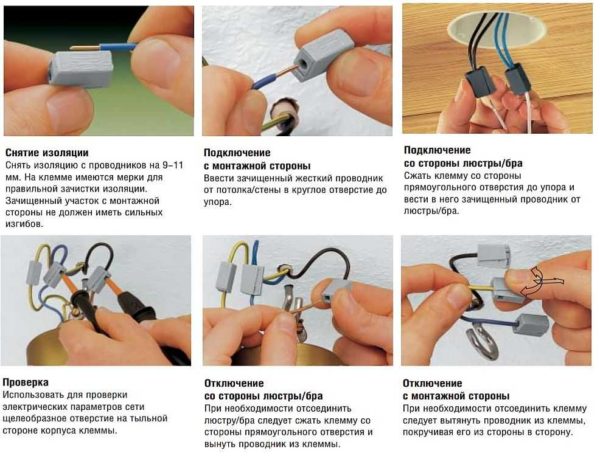
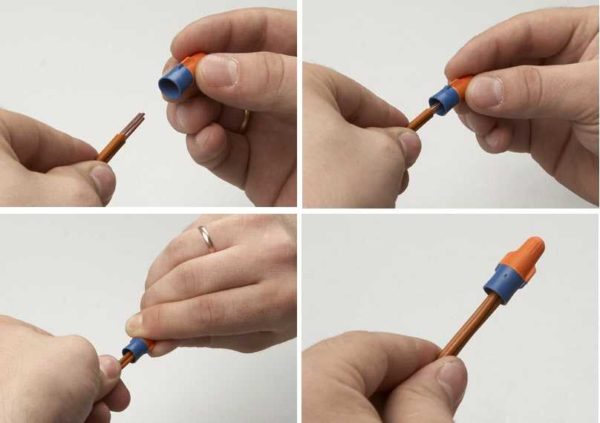
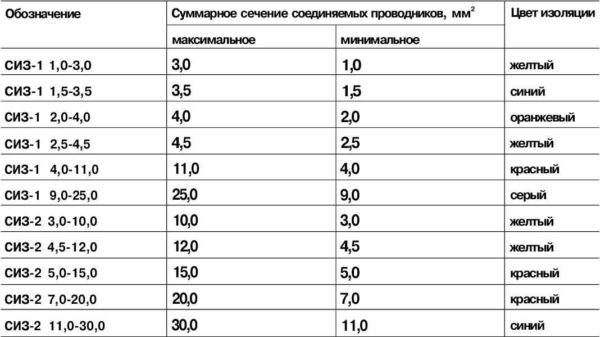
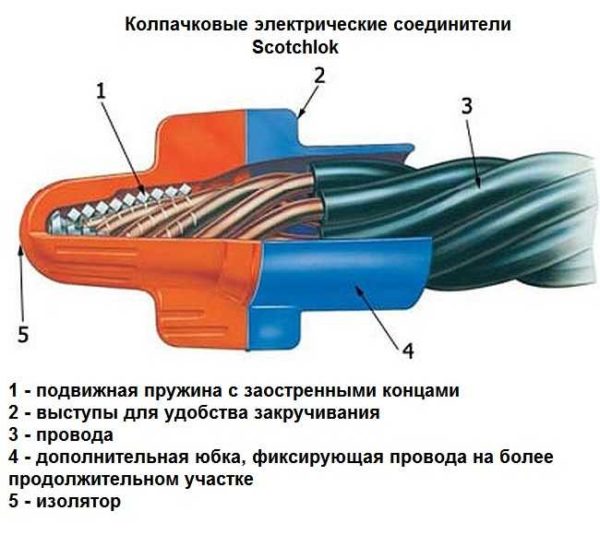

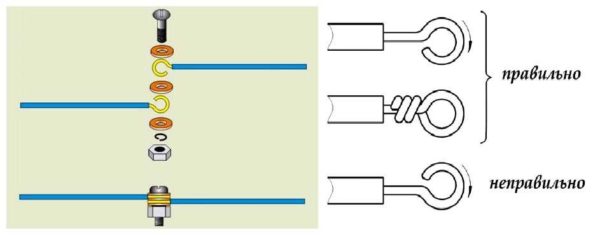
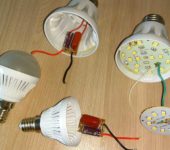

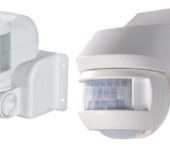
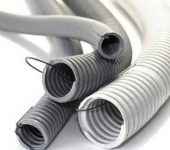
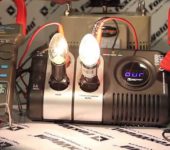





"That the solder has a low melting point and with periodic passage of large currents through the connection (it happens if the protective circuit breakers are incorrectly selected or faulty) the solder gradually melts, evaporates."))) So, only the twist cannot be heated, since the contact is in the twist does not weaken, which means that the entire conductor is heated. Those. Guys, if your solder melts, then most likely there is not much left of the conductor insulation and bare copper conductors can be scrapped.)) No need to compromise the soldering, because it remains the most reliable and time consuming method of connecting wires. Hike for the laboriousness you disliked it.
P.S. Backfill question: why are junction boxes often called junction boxes? )
* soldered
This is your point of view and it also has a right to exist.There are many examples that when soldering a large number of wires, the contact is far from perfect. In this case, it is the place of soldering that is heated, and not the entire conductor, as you say. Soldering two wires - no problem. A bundle of four to five wires with a cross section of 2.5 squares is already a task and few people cope with it perfectly. If you know how, honor and praise you, but if a person is not very good at handling a soldering iron, it is safer to connect via terminal blocks (screw or clamping is already the choice of the one who does it).
Solder paste to the rescue!